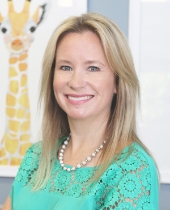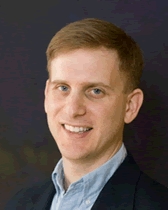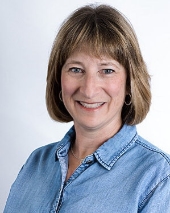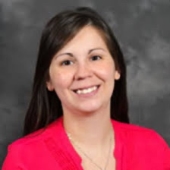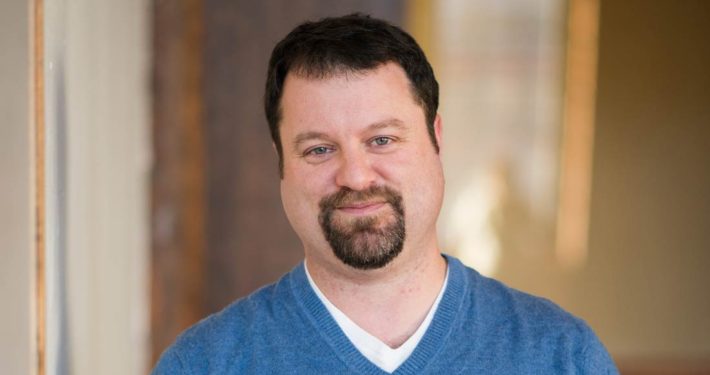Resilience, Relationships and Community: Fostering Wellness and Preventing Burnout
Several independent pediatricians offer their own stories and strategies to foster wellness and prevent burnout, a syndrome that affects over 40 percent of pediatricians nationally.
Fatigue. Difficulty concentrating. Increased irritability. Anger. These are some of the symptoms of burnout, a syndrome that affects physicians across the country in alarming numbers. The field of pediatrics is not immune: about 41 percent of pediatricians surveyed in the 2018 Medscape National Burnout and Physician Depression Report said they felt burned out, a number that is roughly on par with physicians across all specialties. The consequences can be serious, as burnout has been shown to increase the risk of depression, motor vehicle crashes, and substance abuse. Research has shown that the number of physician suicides is more than twice that of the general population, with burnout among a constellation of factors leading to this tragic outcome. There are also potential impacts on patient care; burnout has been associated with decreased patient satisfaction and an increase in medical errors.
What’s behind the troubling trend? The byzantine demands of insurance companies, long work hours, a lack of control over work schedule, and a medical system that puts profit over patient care have all been cited as potential factors contributing to physician burnout. Two doctors writing for Stat News in July of 2018 posited that physicians are suffering from “moral injury” – a term first applied to soldiers returning from war – with burnout as one symptom of a system in dire need of reform. A follow-up article one year later issued a call for collective action.
There’s at least one silver lining for independent physicians: some research suggests that this group has a few things figured out when it comes to wellness. A 2018 study of independent primary care practices in New York City with fewer than five physicians showed a much lower rate of burnout (13.5 percent) compared to previous surveys of physicians across different practice settings. For example, a 2015 Mayo Clinic Proceedings study found that 54.4 percent of 6,880 physicians surveyed nationally reported at least one symptom of burnout. The researchers suggest that four factors are correlated with independent physicians’ greater sense of well-being: their autonomy, their deeper relationships with patients, fewer work hours, and their capacity for organizational development and change.
In the spirit of seeking solutions for a challenge that may at times seem intractable, Independent Pediatrician spoke with several pediatricians across the country about how they promote wellness and prevent burnout. How do they navigate the competing demands of patient care, business management, family responsibilities, and personal commitments, all while functioning in a system that is trending towards mergers and hospital-based care? Their stories suggest a deep well of resilience, and perhaps more than a few paths forward.
Dr. Jennifer Gray
“It’s nice being in a setting where you do feel like family.”Dr. Jennifer Gray
When Dr. Jennifer Gray joined Pearland Pediatrics in 2006, it was a four-doctor practice. Thirteen years later, she’s one of three co-owners leading the now nine-doctor office in Pearland, a suburb of Houston. The last five years have been a whirlwind of growth: as the original practice owner began to cut back on her hours as the first step towards retirement, the new leaders took stock of the community and got to work filling needs where they saw them.
“We were young; we were motivated; we had so many ideas for our practice,” she says.
Some of the new services Pearland has launched in the past several years include a dedicated lactation wing with consultants available five days per week, and a 2,500 square foot walk-in clinic with a separate waiting room and eight exam rooms. The growth has been rewarding, as Pearland has been able to meet important needs for patients, but also exhausting at times, says Dr. Gray.
The experience of a colleague who took a three-month break over the summer to address symptoms of burnout and exhaustion marked an important turning point for the practice, and for Dr. Gray personally. She had her own conversation with her partners to discuss work/life balance and overall practice management. Their “super supportive” response has helped her to re-calibrate and adjust her schedule to meet her needs.
“It’s nice being in a setting where you do feel like family,” she says.
One goal is to create more time for camaraderie: Pearland Pediatrics recently hosted a motivational speaker and they hope to plan more community service events for their 45 staff members. She and her partners try to remember that they serve as an example for their team when it comes to work/life balance. After years in medical school and residency training, Dr. Gray suspects that many physicians have internalized this constant push to achieve, making it harder to dial back when necessary.
“I’ve always sacrificed. I’ve always put patients first,” she says. “You just go and go and you don’t think about it.”
About five years ago, she found an unexpected outlet to foster wellness when she went on her first medical mission trip to Haiti with an organization called Mission of Hope. Volunteers staff clinics in rural villages with little access to health care. The experience changed her. Dr. Gray says renewed energy and purpose came with helping those in need. She’s been to Haiti once a year since that first trip, continuing to build relationships in the same villages she has visited for years. It helps to keep her focused on what’s important.
“While caring for patients in Haiti, a far different setting than my typical day in the office, I am shown year after year that it is the person in front of me that matters,” she says. “In times when I have struggled with burn out, these experiences remind me that medicine allows me the privilege to serve others. This is what fuels my passion and strengthens me to keep going.”
Dr. Seth Kaplan
“If we can create systemic change, that can potentially make a difference. For me, being involved in organized medicine has been a huge part of what I do.”Dr. Seth Kaplan
Dr. Seth Kaplan has experienced seismic shifts in his practice over the last several years. After a practice without walls he joined in 2016 didn’t work out, he found himself faced with the specter of declaring bankruptcy and closing his practice in Frisco, Texas. The second physician in his two-pediatrician practice also left for unrelated reasons around this same time, adding stress and uncertainty to an already fraught situation. Fast forward to 2019 and he’s successfully weathered the challenges. Now, he is on more solid footing as a solo practitioner at TLC Pediatrics in a region experiencing rapid growth as an exurb of the Dallas metro area.
“I’ve spent the last two years rebuilding the practice and figuring out how to move forward,” he says.
Dr. Kaplan has also dialed in a few ways to prevent burnout, turning a situation that could have broken any physician into an opportunity to grow and evolve. One relatively simple change: he’s learned that getting outside for some fresh air is important for his mental and physical health. A local running group provides social opportunities.
“I picked up running about 10 years ago,” he says. “Now I do half marathons and sprinkle in a marathon here and there.”
His second personal commitment is daily crossword puzzles, often in tandem with his wife.
“It’s a silly little thing that gives me pleasure and it keeps my brain sharp,” he says.
The incorporation of meditation into his daily routine has helped him to slow down and step away from the drum beat of daily life.
“Taking that one minute a couple of times a day to re-center can be huge,” he says.
Through a Jewish leadership program, he learned about Mussar, an ancient spiritual development pathway focused on meditation and other contemplative practices and exercises. He’s been able to develop a mantra – an easy-to-repeat and remember catchphrase – that he can return to when stress overwhelms. Although they change over time, his current one is: “All I can do is what I can do.”
“We constantly have demands put on us that can seem unreasonable, and it’s easy to get caught up because we want to do what’s best by our patients,” he says. “I use that phrase to remind myself that I’m doing the best I can.”
A course offered by Duke University, his medical alma mater, has been eye-opening. Titled “Intentional Life Design for Physicians: Tools to Rediscover Your Calling,” the course has prompted him to re-focus on what his values are, and is helping him to learn how to set macro and micro goals personally and professionally.
“For those that relate to my practice, they are only attainable because I am independent and have the control to be able to make them happen,” he says. “Some are small changes in day- to-day functioning, some involve learning new mindfulness techniques, and some involve systemic changes.”
Dr. Kaplan also addresses physician wellness through advocacy. He’s become a proponent of action at the state and federal level, so that pediatricians aren’t battling against burnout on their own.
“If we can create systemic change, that can potentially make a difference. For me, being involved in organized medicine has been a huge part of what I do.”
He’s president-elect of the Texas Pediatric Society; he also recently finished a four-year term as chair of the group’s executive legislative committee and has served as chair of the committee on administration and practice management. Although it’s another time commitment in an already busy schedule, these roles give him the opportunity to educate policy makers and legislative leaders about what pediatricians need from government to do their best work for patients.
“This has me working with other pediatricians across the state. We can share what the issues are that can lead us to get burned out,” he says. “We can think about ways to actually solve them.”
Dr. Jenn Gruen
Dr. Gruen’s journey to co-owner of a small practice in Westport, Connecticut started with a pact of sorts. After scaling back from full-time at a larger practice to care for her own children – she says she learned that she had to “be in a practice that values my family” — she had been working three days a week in a very small practice that operated out of the owner’s home. When that pediatrician started talking about retirement, she had conversations with friend and fellow pediatrician Dr. Nikki Gorman. They knew they’d have to find a new location, but they both wanted to practice medicine in a way that allowed them to build relationships with families as well as have time for their own.
The two said to each other: “Let’s figure out how to make this work and keep our sanity.”
Village Pediatrics grew out of that conversation. Eleven years later, it’s a four-pediatrician practice that has kept its focus on providing the best care they can while creating a positive workplace culture for staff and physicians. Dr. Gruen says as a medical student she never would have dreamed she’d be a business owner.
“Because I had to reinvent myself in order to be able to practice how I wanted, I figured it out,” she says.
Key to the success of Village Pediatrics has been flexibility and an ability to adapt to the group’s needs. All four physicians are also mothers – with several of them married to physicians — so the team relies on each other to fill in when necessary. Over the years, their own kids have been welcomed into the office if they need to stay home from school – they bring a “pillow and a blanket and books” and set up in a quiet corner. This help extends outside of working hours. The four pediatricians pick up and drop off each other’s children, have them over for dinner, and generally operate as a large extended family. It’s an approach that includes the entire staff. Gathering for celebrations, planning social events, and providing support for team members is the glue that holds them together.
“We understand each other and we cover for each other,” says Dr. Gruen.
Village Pediatrics has a small per-child administrative fee to help cover expenses. In addition to private insurance, the practice even accepts Medicaid. They’re also able to adjust their fee schedule to accommodate special circumstances, like if a parent loses a job. She says their families value the comprehensive care – Village Pediatrics also offers in-house behavioral and mental health services and walk-in hours – and they understand the fee helps make it possible.
“We spend time with families and we do all of our own call,” she says. “That’s what people love about us.”
Beyond Village Pediatrics, Dr. Gruen has also found support through social media, specifically a Facebook group for pediatricians who are also mothers. An offshoot of this group focuses on crafting: their Friday Night Craft-Alongs have become a way to build community. They talk about burnout; they vent, and they also channel their energy into supporting each other through challenges.
“We’re communicating with other women in the same field,” she says. “A lot of us have found that this is an important outlet.”
Dr. Jennifer King
Right out of residency training, Dr. Jennifer King joined a practice in Muskegon, Michigan, already with an eye on preventing burnout. She had been looking at opportunities in the Detroit area to stay close to family, but when she found most positions required “more hours, less flexibility, and a lot less pay,” she and her husband chose the small city of Muskegon about 200 miles from Detroit to make their home.
One of two co-owners of a five-physician practice called Shoreline Pediatrics, Dr. King points to the ability to prioritize what’s important to her as one driver of wellness. The practice’s physicians are not employed by the practice; they operate independently, building their patient panels and earning a living based on that work. This means they can scale up or scale back in relation to other demands on their time. With four children ranging in age from one to 11, Dr. King appreciates that she can arrange her schedule so that she’s there when they need her.
“I have an hour blocked in the middle of the day to go read to my children’s class. I come back and finish seeing my patients in the afternoon,” she says. “I don’t ask anyone if I can do that – I just go to the schedulers and I ask them to block me. It allows me to have flexibility to do the things that are important to me.”
What else needs to change to promote physician wellness? She points to the external measures imposed by some insurance companies as both unrealistic and draining for pediatricians. For example, when a patient misses an appointment because of a lack of reliable transportation – something that happens all too often in her rural and under-resourced region – her quality scores suffer. It’s not an accurate representation of the care she provides, nor does it help to solve the problem.
Ultimately, the relationship between a pediatrician and a family is at the core of great patient care, says Dr. King, a tenet that the U.S. healthcare system should refocus on.
“I believe medicine is an art and a science. With these measures that are put forth, a lot of the time it takes the art out. It takes out the interesting part that a lot of physicians enjoy.”
Dr. King also looks to the next generation. She wants new pediatricians to be introduced to the myriad options physicians have to practice medicine. This would mean more business training and more exposure to private practice as they complete residency.
“So many of them are scared of student loan debt,” she says. “They like guaranteed knowledge of what’s to be and what’s to come, so private practice is intimidating to them. We need to teach more business in our medical schools so they feel empowered.”
A resident of Burlington, VT, Erin Post has a BA degree in English from Hamilton College, and is a graduate of the writing program at the Salt Institute for Documentary Studies. She is currently working on her master’s in public health at the University of Vermont. In her spare time, she likes to bike, ski, hike, and generally enjoy the Green Mountains of Vermont.



